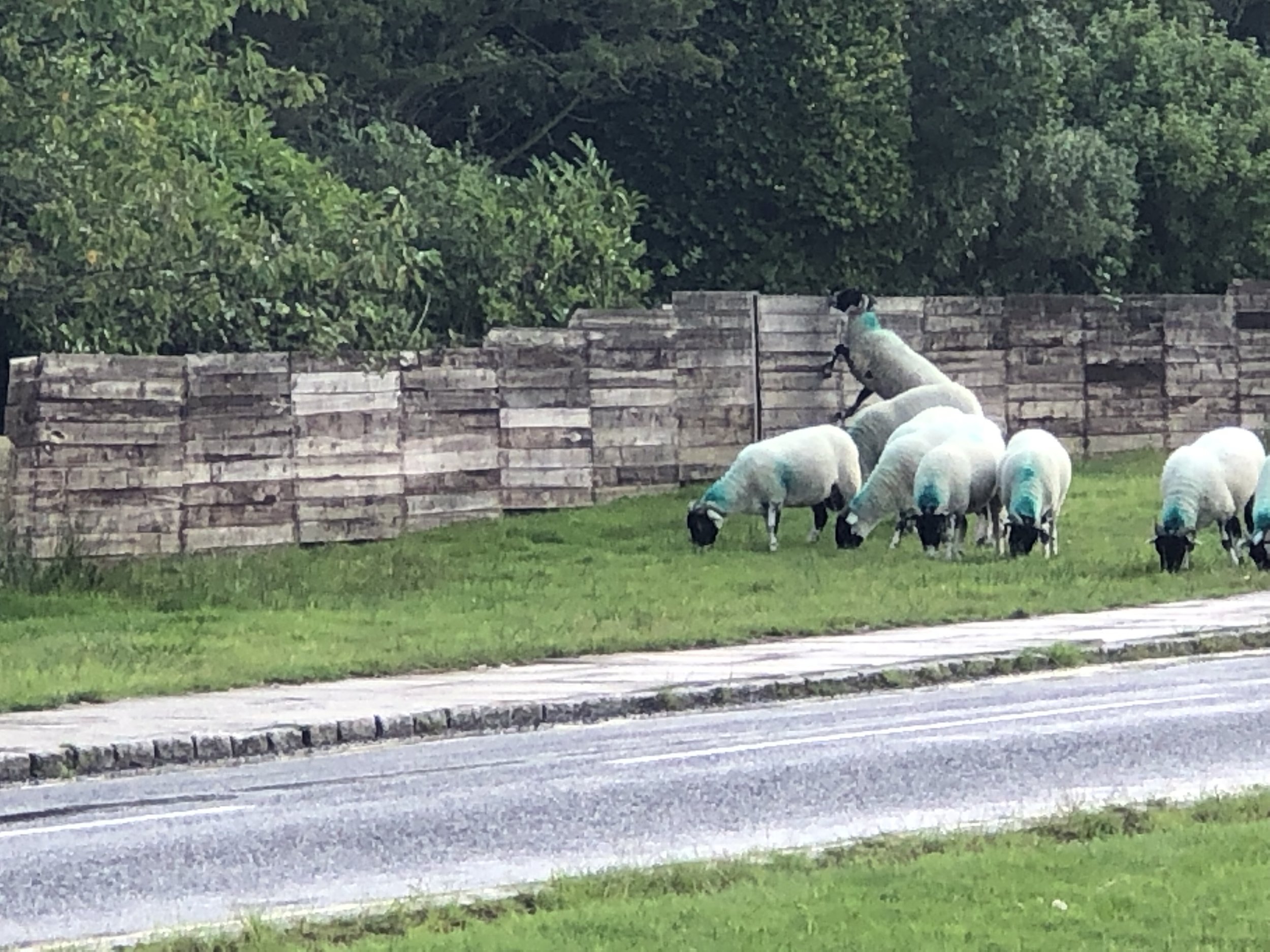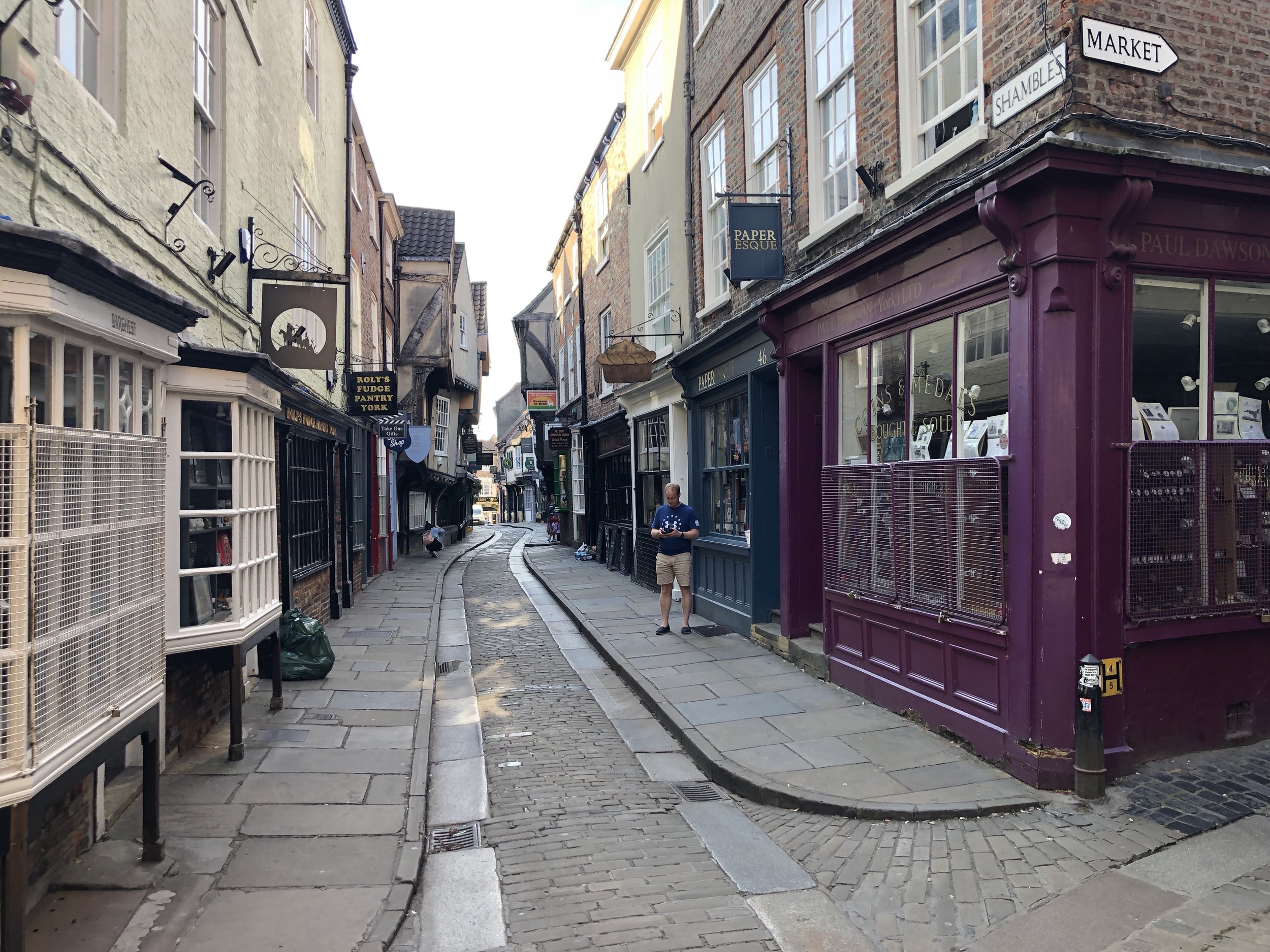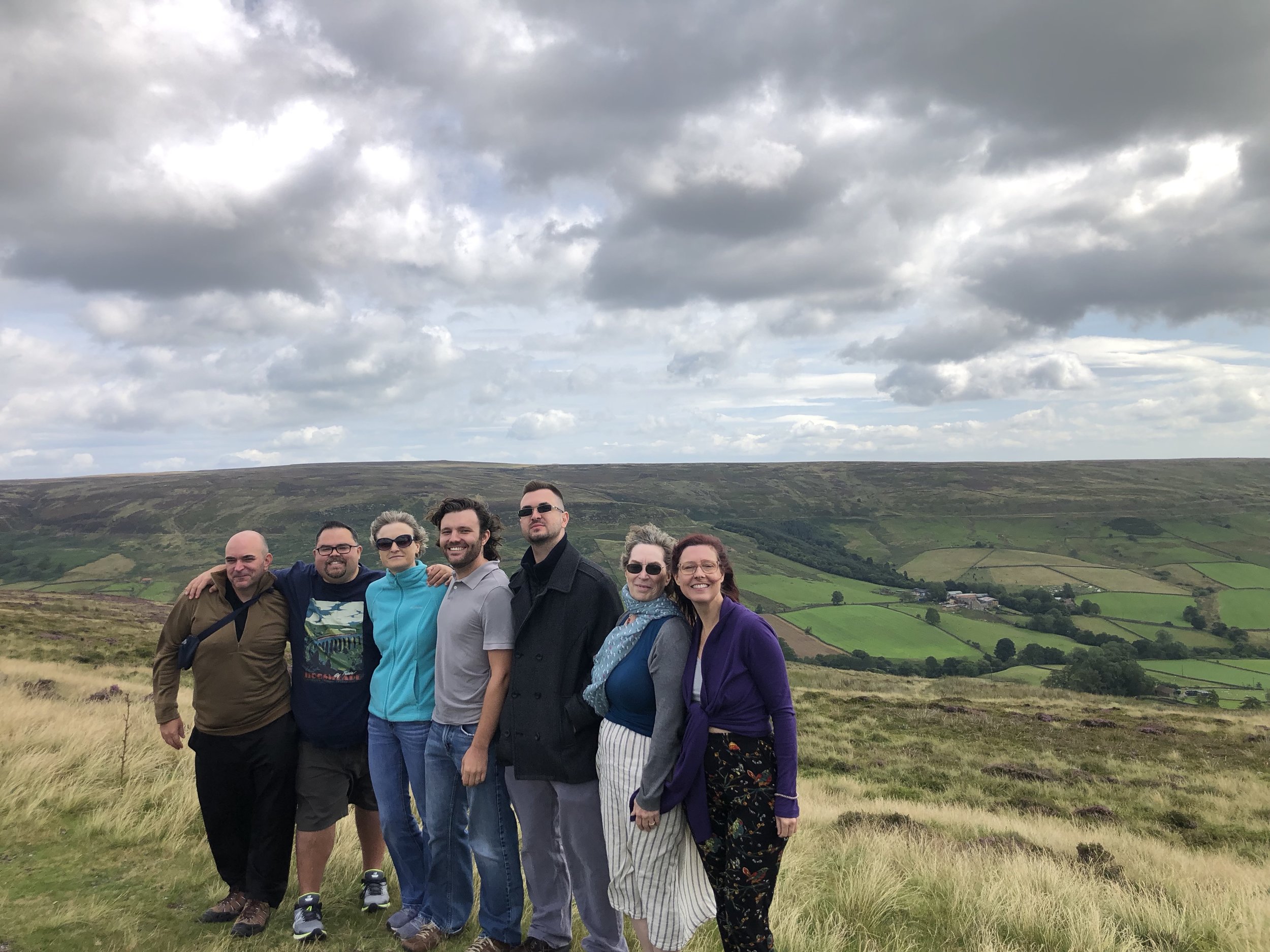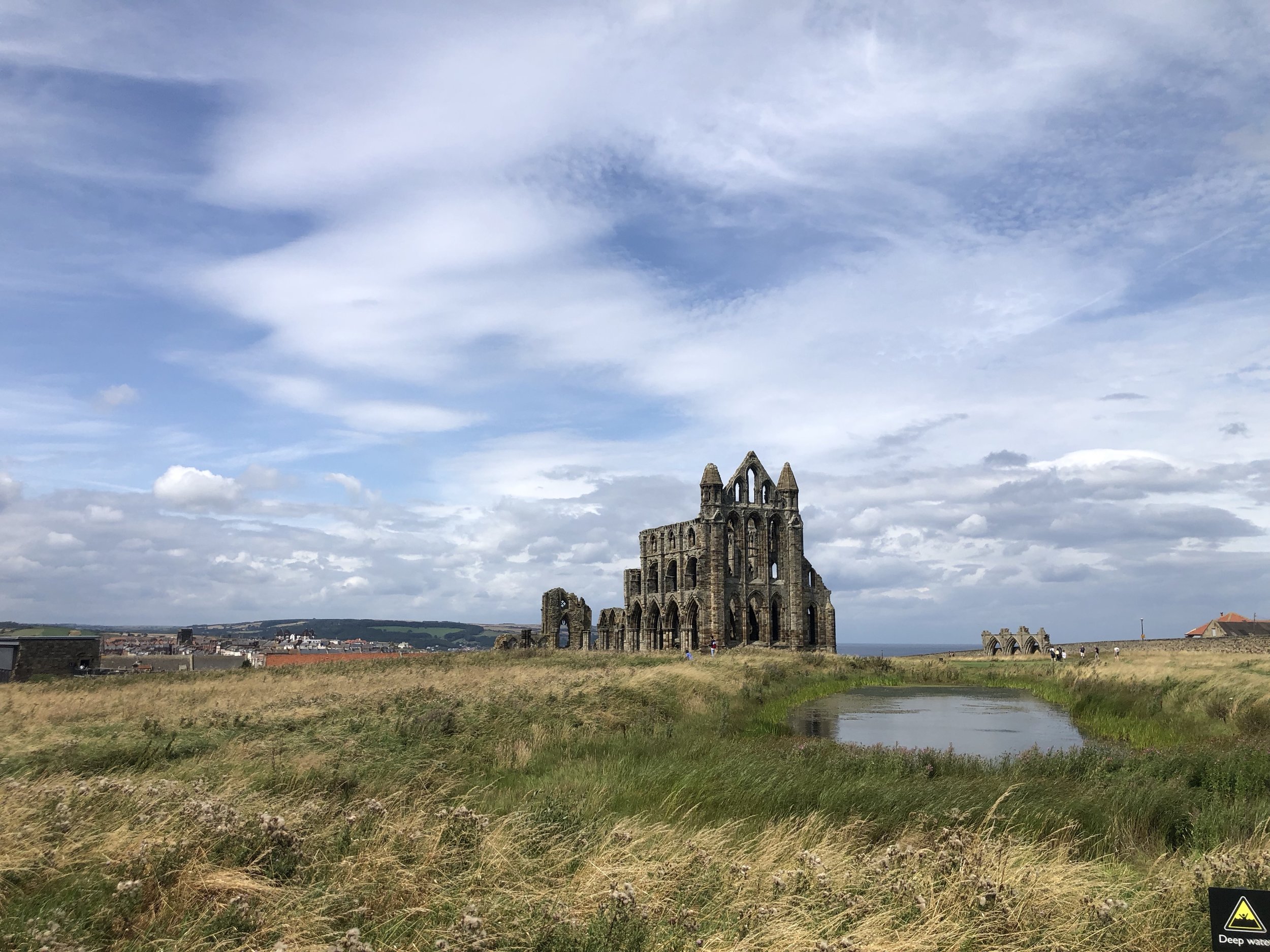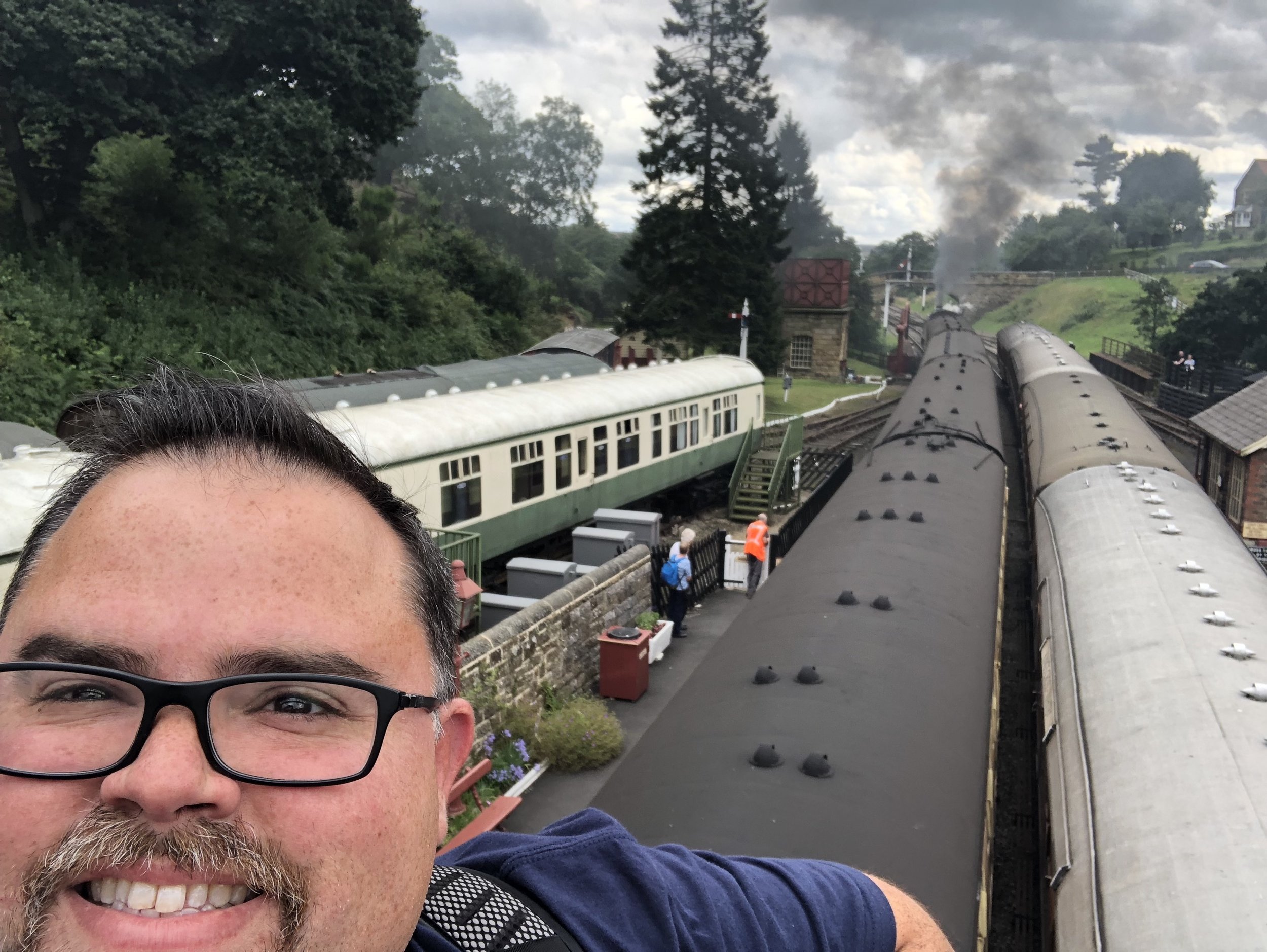Day 5 began with an early morning train to York. From there it was a tour through the North York Moors National Park and out to Whitby. If in reading one of your English novels you’ve read about a moor, the adjective that preceded it was almost certainly "desolate". That is the reputation of this place. The moors are highlands, but the soil is too acidic for trees. Instead, these hills are covered in heather growing in rich purples and reds. In addition to the heather, one can find sheep. A lot of sheep. The fluffy (and smelly) beasts are everywhere. They rule the roads and the hills and the occasional shrubbery. I cannot express the amount of joy that these animals bring me. If I thought they would do well in the Florida climate, I'd be starting a flock.
Despite the reputation of the moors, I found them quite beautiful. My favorite portions of this day were the occasional stops on the moors. We would stop on some ridge where we could amble about for a few moments until the driver grew impatient. Perhaps the beauty of the moors was enhanced by my experience seeing them in the middle of summer on a beautiful day. If one were to hike through them in the rain or snow, bleak and desolate may be the only apt description.
In addition to the moors, we stopped in the seaside town of Whitby. This was the home of the famous Captain Cook and the site of the ruined abbey that helped inspire Bram Stoker to write his novel Dracula. The abbey sits atop a ridge overlooking the ocean, and the views are quite stunning. The town itself has moved from an important producer of fish to a key tourist destination. It was interesting to see the kids playing in the surf while I was putting on my jacket and looking for something warm to eat, but such is life in the North of England. The fish and chips were good and the abbey was wonderful, but I wasn’t in the moods for the crowds. I could have done with some more of the moors and the isolation they provide.
I did find myself wondering at this juncture: what am I to make of nature? I believed that the moors are a unique landscape deserving of our protection, but the question is why? Is there intrinsic value in the land itself or the ecosystem? Is my desire to preserve this space pure sentimentality or a belief that the aesthetic value of the place is enough to warrant its protection? Is there something intrinsically good in beauty? Or is it simply I want it preserved so that a select few of us humans can enjoy it and appreciate it? These are the thorny questions that “nature” forces us to confront.
